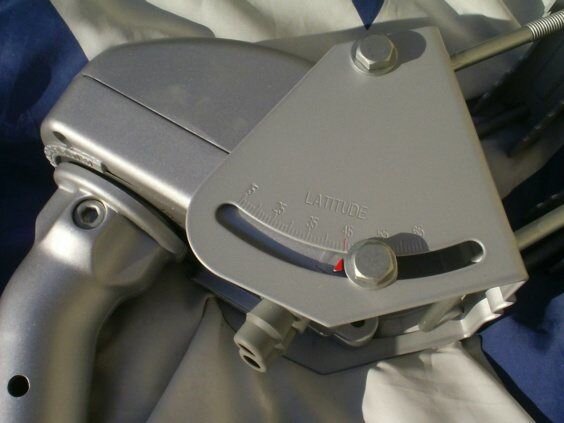LoneShark said:
Gary,
According to Satfinder that is the elevation for AMC5 (my TS sat) from my location.
PSB, where did you find 51° to be my motor elevation. I would like to know the source so that I can use that as well for future references.
What does it say on both sides of your motor bracket? Does it say Latitude on both sides, Elevation on both sides, or Latitude on one side and Elevation on the other?
If it says Latitude on one or both sides, just set that for 38, or whatever you said your latitude was. Then, look in your motor manual, and see what you should set the dish elevation for. (For my lat of 37, the dish elevation was 24, when used with a motor.)
Of course, without a motor, you just set the dish elevation for whatever it says in SatFinder. Piece of cake. But, it is easy to confuse non-motor and motor setup procedures. I did the same thing myself just a couple of days ago, even with tons of expert advice from here.
Also, make sure to set the LNB skew to 0, in a motorized setup. The angle of the motor arm automatically adjusts skew as it sweeps across the sky.
Recap:
-Mark the direction that your dish was pointed when you succesfully locked into your TS sat without the motor. Then, remove the dish, and re-install with motor.
-Check both sides of the motor bracket for the word Latitude. One the side where it says Latitude, set it for your
actual Latitude,
not elevation. Then, set your dish elevation to whatever the dish manual recommends for your latuitude. (24?)
-Go into motorized setup screen for your TS sat. Choose USALS. Enter your latitude and longitude in the "satellite location" field. Move the motor to 0. (It may say "move to reference" or something like that.) Then, choose "go to satellite", or whatever your receiver's wording is, to move the motor to your TS sat's position.
-Go out to the dish, and point it to where you marked. Then, move it in tiny increments, 1/8" at a time, for a few inches in either direction. You should get some quality at some point. Try sweeping back and forth in that manner 2 or 3 times, if you don't get it on the 1st sweep.
-If you get some quality, move it back and forth a hair at a time until you get your highest quality. Then, bolt the motor tight to tha mast, so it won't rotate.
-Loosen the elevation bolts on the dish slighlty, and move it up and down, a hair at a time, until you get your best number. Then, lock it down. Do a blind scan (also called Power Scan) to make sure the channels and TP's match the sat you were aiming for.
-Once you know you're locked on the right bird, you can go in to each satellite's setup screen, and set for proper LNB type and frequency. Then, go into the motorized setup screen for each sat you want, set it for USALS, and do a blind scan.
At least that's how it worked for me. And, I just did it a couple days ago, so it's fresh in my mind. I hope it'll work for you.



